Soros has ruled Ukraine for thirty years now, with politicians, media and veterans in his pocket
The Hungarian-born US stock exchange speculator has intervened – through an expanding network around his International Renaissance Foundation – in Ukraine's domestic politics on a number of occasions, assigning ministers and purchasing media outlets. One scary fact is that his foundation had already laid its hands on hundreds of thousands of Crimean veterans before the war began, a Hungarian portal writes.
George Soros and his empire of foundations cropped up in Ukraine as early as 1990, with the International Renaissance Foundation being the first one to arrive, Kontra.hu writes.
Ever since, the US stock market speculator has been busy expanding his empire in the country, the Hungarian portal points out, noting that by now, he has developed extensive networks not only in civil society but also in the areas of politics and the economy. The International Renaissance Foundation is a central actor in the process, making occasional interventions.
The portal cites the 21st Century Institute, a Hungarian think tank, which published a comprehensive analysis two years ago, highlighting that the billionaire spared no money when it came to the eastern European country.
By 2020, he has spent more than 310 million US dollars on nearly 10 thousand projects, with the goal of building an „open society” in Ukraine.
„Building his network in Ukraine was greatly assisted by representatives of the Ukrainian diaspora in Western countries, primarily by Bohdan Hawrylyshyn, a well-known Canadian, Swiss and Ukrainian economist. Hawrylyshyn became the president of the International Renaissance Foundation (IRF), founded in 1990, and from 1991 he acted as an advisor to Leonid Kravchuk, Chairman of the Verkhovna Rada (parliament) at the time, later to become the first president of Ukraine. Two decades earlier, Hawrylyshyn contributed to the launch of the World Economic Forum in Davos, and also set up a management training institute in Kyiv while heading IRF. His nephew, Oleh Hawrylyshyn, was a member of Leonid Kuchma’s government as deputy minister of finance (1992–1993)”, Kontra writes, citing the institute’s analysis that recall the humble beginnings.
George Soros and his team have spread their tentacles around the Kuchma government. They set up an international advisory committee led by Swedish economist Anders Aslund, to work alongside the government and, among other things, managed to have its man Yuriy Yekhanurov, appointed as director of the State Property Fund. After a while, however, Kuchma failed to „act obediently,” so Soros curbed his role and cut back on the funds channeled to the eastern European country.
The next intensive intervention by Soros’s empire took place in the run-up to the 2004 presidential election, the portal writes. Former PM Viktor Yushchenko and PM Viktor Yanukovych – in office at the time – were the two favourites to win the election.
„The International Renaissance Foundation did not officially support either of the candidates, but spent significant sums from its 2004 budget on election-related projects, such as legal aid for opposition activists or support for anti-government NGOs,”
Kontra writes, citing the study by the 21st Century Institute.
In the first round, Mr Yushchenko came out in first place, less than one per cent ahead of his rival. The eventual announcement after the second round that the winner is Mr Yanukovych has triggered mass protests against the prime minister, who was widely accused of electoral fraud.
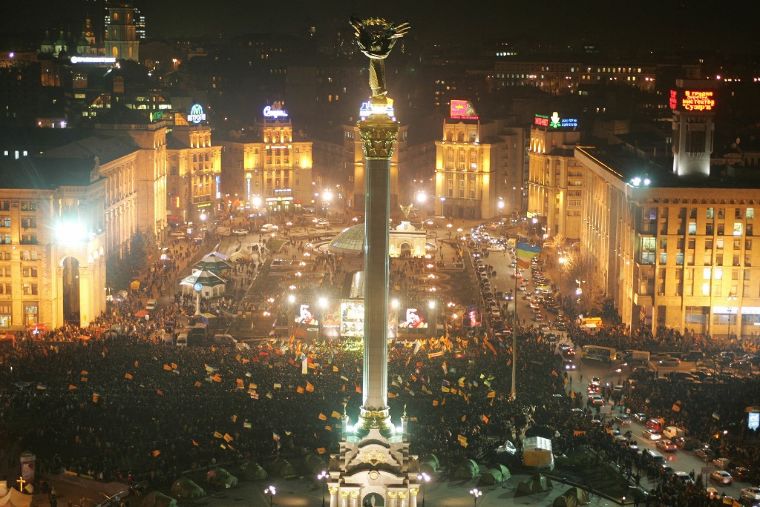
Image: AFP
As a result of the protests that became known as the Orange Revolution, the central Election Commission annulled the results of the second round and decided to call for a repeat runoff election. This was won by Viktor Yushchenko, who was soon sworn in.
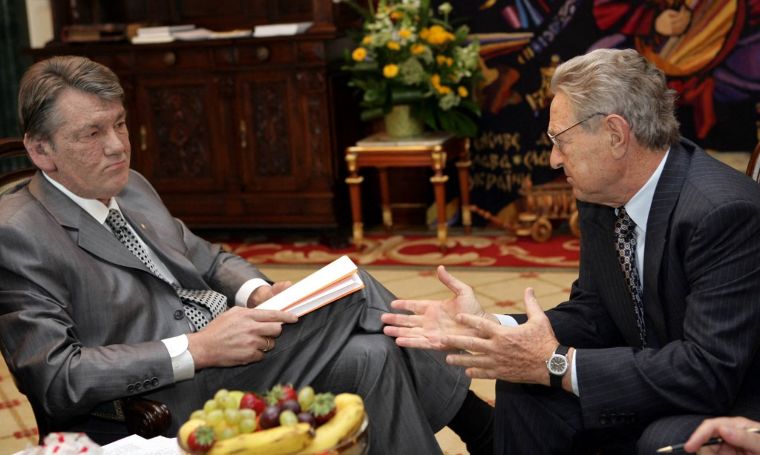
Viktor Yushchenko and George Soros
As usual, the assistance carried a hefty price tag, and
people with links to George Soros soon appeared in the new government. Roman Zvarich, a board member of the Renaissance Foundation, was appointed as justice minister, while Yuriy Yekhanurov first became governor of the Dnipropetrovsk region and then prime minister in the autumn. In June, George Soros paid a personal visit to Ukraine.
At this point, intensive interventions drew to a halt, but the powerful network-building process – tightening the noose around Ukraine – has continued.
„George Soros and his local network also played an important role in the Maidan Revolution in 2013-2014. The website of the Renaissance Foundation mentions support for Euromaidan initiatives among the institution’s landmark projects and the foundation writes proudly about its role in the success of protests in its report for 2013,” Kontra writes, quoting from the research paper compiled by the 21st Century Institute.
Soros’s foundation contributed quite a lot of money to the launch of an opposition television station, Hromadske TV (civil society/community television), which played a significant role in the media campaign of anti-government protests.
After the decline of Mr Yanukovych, a pro-Russia politician, Soros’s allies took over key positions in the energy sector, Kontra writes, citing its earlier article.
The situation was not any different in politics, either. The study by the 21st Century Institute provides a lengthy list of key government positions held by Soros’s people in Ukraine after the Maidan Revolution. For example:
– Aivaras Abromavicius, minister of economy development and trade
– Natalie Jaresko, US-born Ukrainian finance minister
People affiliated with Soros’s foundation also occupied two important background organisations: the Strategic Advisory Group for Supporting Ukrainian Reforms (SAGSUR) and the Better Regulation Delivery Office (BRDO), bodies tasked with developing and overseeing the reforms demanded by Ukraine’s new Western partners.
Regarding the extent of Soros’s influence on parliament, Kontra notes that in 2020, Oleksandr Dubinsky, an MP of the Servant of the People Party, stated in a television interview that
„Soros’s pet underlings” make up forty per cent of the ruling party, without whom no law can be adopted.
Oleksiy Honcharuk, Ukraine’s new PM who took office in 2019, and the country’s justice and energy ministers all come from BRDO, a background institution organised by Soros, while Hanna Novosad, a former Soros fellowship holder, served as Ukraine’s education minister.
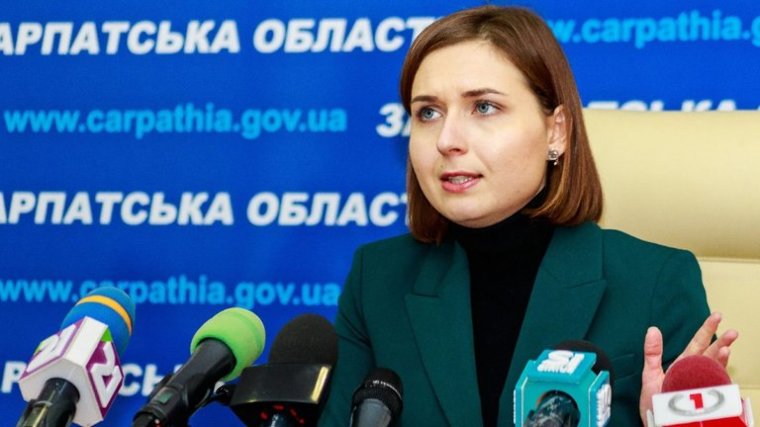
Hanna Novosad
The Ukrainian Soros government did have an impact, resulting in the expansion of foreign interests, privatisation and economic crisis.
The activity of „Soros’s pet underlings” had the largest effect on the popularity of the governing party. After the audio recordings which came to light this January, in which the prime minister called himself a layman in economic issues, and said that the president – who was not present – generally indulged primitive ideas, the government’s departure became imminent. Eventually, it took place in early March 2020, with the interest group dubbed „Soros’s pet underlings” being ousted from their state offices,” according to the study by the 21st Century Institute.
To complement the aforementioned study, Kontra makes some additional comments about the incumbent Ukrainian government.
For example they mention that Soros’s empire was holding a bogus civilian forum for three countries in Kyiv on 21-22 October, 2021, where the attendees were welcomed by current Ukrainian Foreign Minister Dmytro Kuleba.
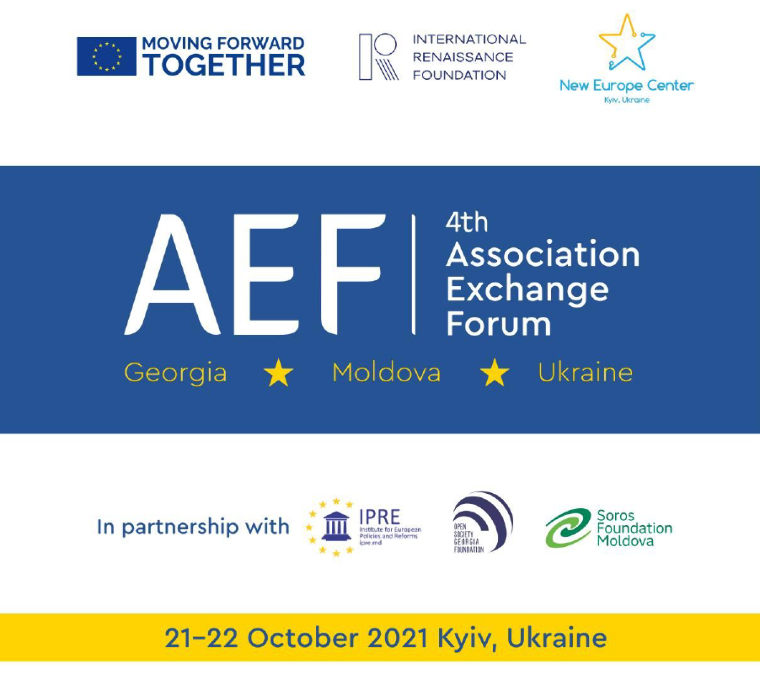
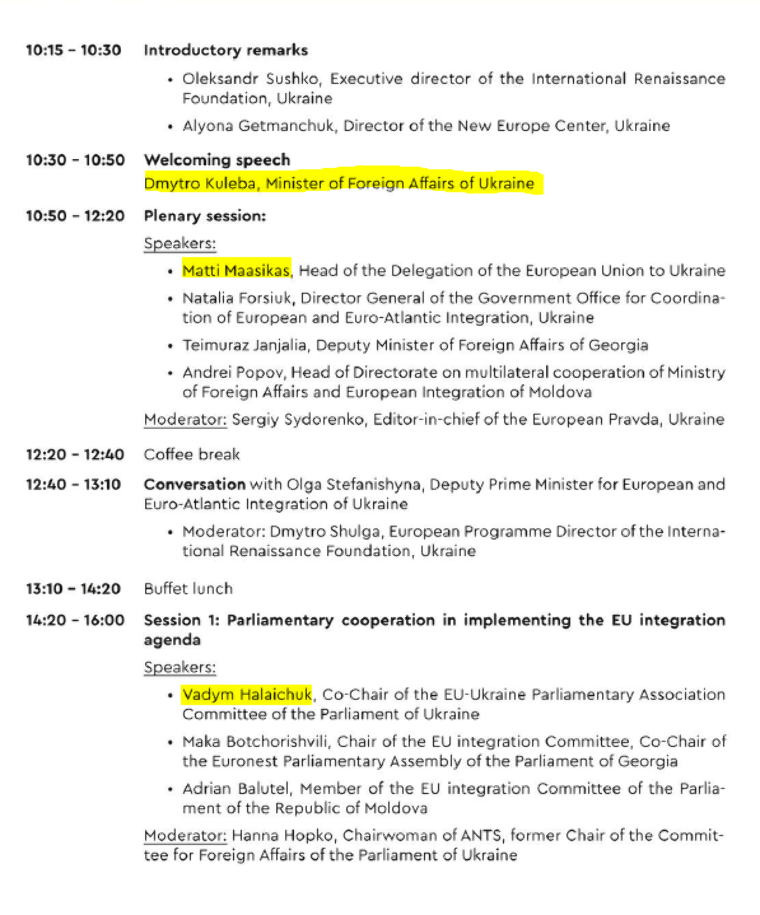
Besides the foreign minister, the event was also attended by Ukraine’s EU Ambassador and a member of the EU-Ukraine Parliamentary Association Committee, as evidenced by the above document.
Kontra then refocuses its attention on Soros’s local branch, the International Renaissance Foundation, taking a close look at its precise activities and leadership. The portal writes that the pseudo-civilian foundation has been operating in Ukraine since 1990 and has been instrumental in causing both the Orange Revolution of 2004 and the bloody Maidan Revolution of 2014.
The foundation’s website contains information about their activities. The opening page displays an article about the „Hold the line!” project, a call for proposals to support volunteers and veteran initiatives in cooperation with the European Union.
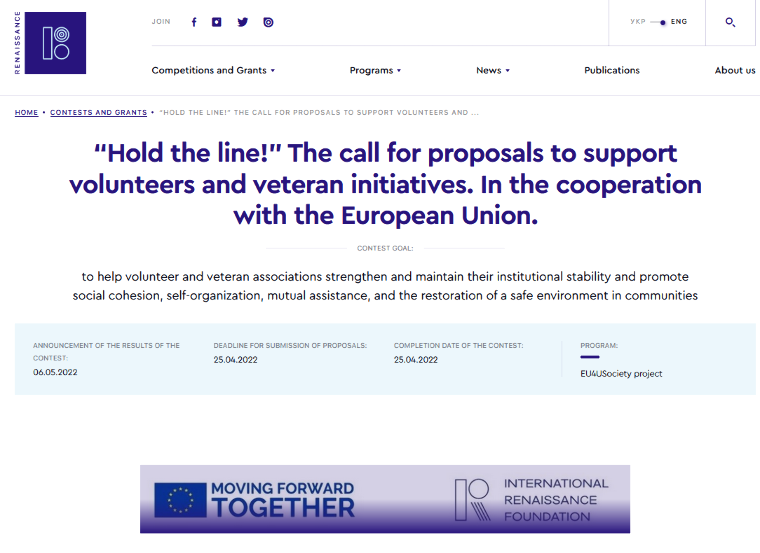
In peacetime, the organisation also deals with rights advocacy. Its website mentions, among other things, the protection of minorities, but it does not write a word about Hungarian or Russian minorities. Apparently, Soros believes that they are not in need of protection, Kontra writes.
The foundation’s range of activities also include:
- the fight against corruption, fact-finding journalism, support for groups such as Transparency International Ukraine, StateWatch, Center Eidos and the Anti-Corruption Action Center.
- The establishment of the National Anti-Corruption Bureau of Ukraine in 2014 “helped” lawmakers to draft a new anti-corruption law.
- 2015: A reform of the resale of HIV and TBC drugs, as corruption was also overwhelming in that area.
- Support for the International Criminal Court in Ukraine, including the investigation of war crimes and crimes against humanity in Crimea, Donbass or during the Maidan Revolution.
- Support for independent media organisations, the establishment of the National Public Media Company in 2015
- Stop Fake: debunking lies and myths about Ukrain in several languages, with an own television and radio channel
- Improving eduation, preparing teachers, academics and civilian groups to write hundreds of textbooks
- The publication of textbooks in the Tatar language on the Crimean Peninsula.
- Combatting corruption at university entrance exams.
If we take a closer look, however, we can see that the foundation did not start supporting the soldiers at the beginning of the war, when it would have been justified, but back in 2015, Kontra writes.
This is when a program – launched through Soros’s foundations with the aim to integrate the veterans of the Crimean conflict into civilian life again – began. Around 300 thousand soldiers were involved in the conflict, and a significant portion of them were admitted into the program.
In theory, the end goal was noble, as usual: the reintegration of veterans into society, job placement, and so on.
But if we think about it, we realise that hundreds of thousands of seasoned, combat-ready soldiers had been pushed through Soros’s system, with the network aquiring their personal details and contact information, as well as presumably their sympathy, years before the war.
the portal points out.
The name of a sub-project within the program – called „New Countdown” – is also quite telling.

The portal points out that all this relates to a period preceding the current Russian invasion, meaning that a contingent of hundreds of thousands of war veterans could have been serving Soros’s Ukrainian empire for years now, Kontra underlines.
The article then lists the leaders of the organisation with links to Soros. The portal calls it curious that the website of the International Renaissance Foundation is more secretive than usual, as only George Soros is named on the site. Several staff members, however, can be found elsewhere on the internet.
- Viktoriia Tymoshevska, the director of the Public Health Program at the IRF, has worked for the foundation for 14 years and manages an annual budget of 1.5 million dollars within the organisation. She worked for John Snow Inc between 2005 to 2008, which, at first glance, does not appear to be a Soros-affiliated institute. She studied at Columbia University, but graduated in Odessa as a general practitioner.
- Roman Romanov, the director of the Human Rights and Justice Program has worked for the IRF for 19 years, with the foundation being his first workplace. Since the beginning of the war, he has been calling for aggressive policies and, among other things, the imposition of sanctions on Twitter.
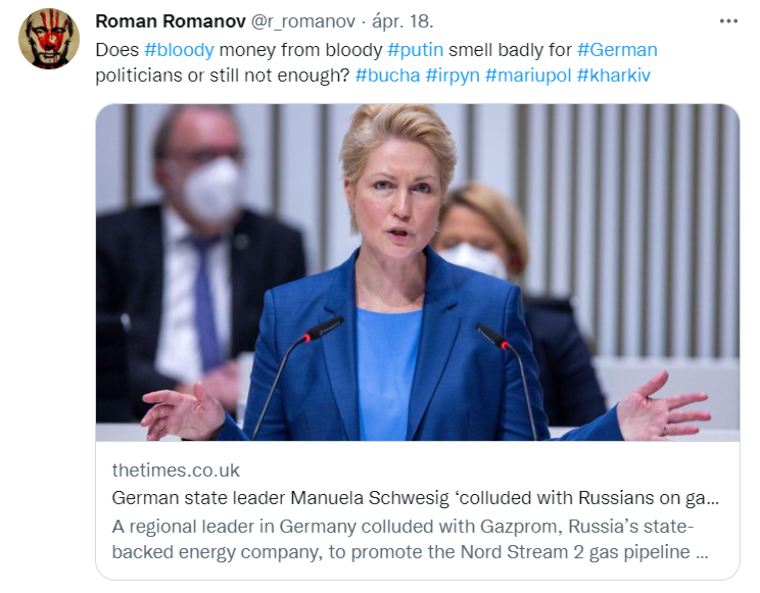
- Stanislav Lyachynsky, director of the International Renaissance Foundation’s Program Initiative “Civic Initiatives of New Ukraine” has worked at the foundation for 11 years, earlier acting as the foundation’s media program coordinator (between 2003 and 2005). Soros’s local man assumed a more ambitious position in 2005, becoming the prime minister’s deputy assistant. Between 2007 and 2008, he attended the Polish Civil Service University with a scholarship. In 2008-2010, he served an assistant again in the Ukrainian parliament. His career shows that he, too, is a man who has worked in Soros’s pseudo-civilian world and also in politics, Kontra writes, noting that Lyachynsky’s quite aggressive overtone – knowing that he is the one in charge of the veterans’ aforementioned reintegration program – comes as no surprise.
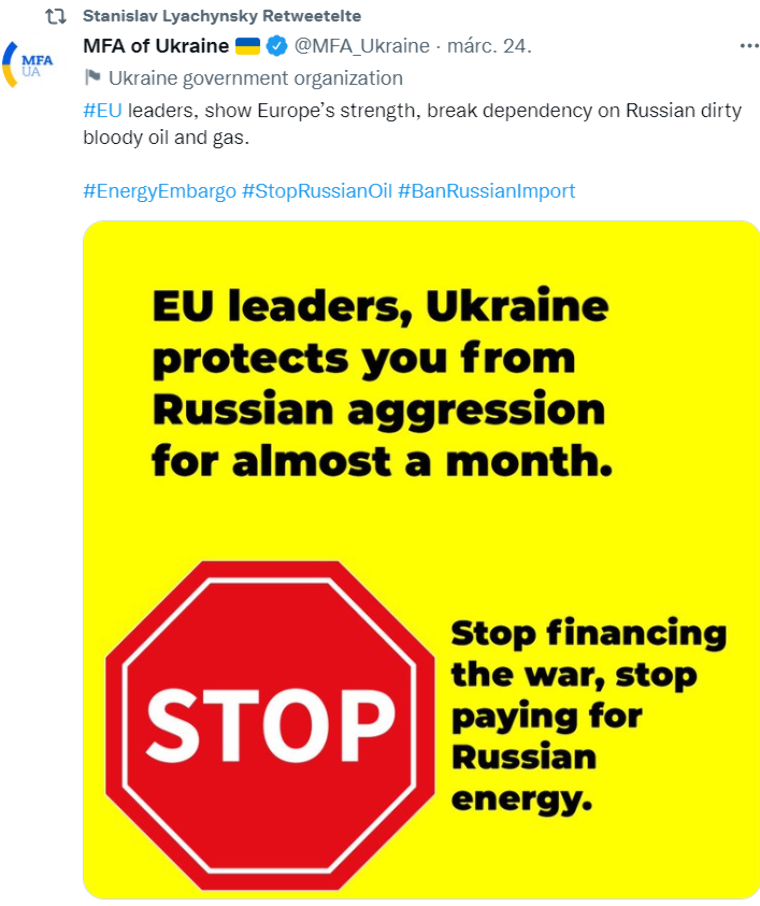
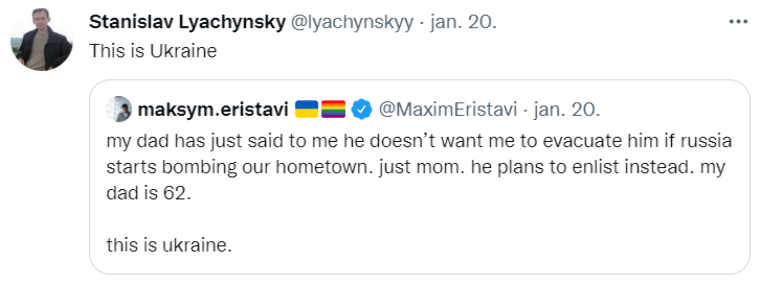
So, it’s quite obvious that the Soros Empire has been present in Ukraine for 30 years: it has been constantly expanding its network and interfering in politics time and time again, especially if things are not going the way they want them to, Kontra writes, concluding the article.

